Caladiums, often referred to as “Angel Wings” or “Elephant Ears,” are a stunning group of plants celebrated for their vibrant and intricate foliage. Native to South America, particularly Brazil, Caladiums have captured the hearts of gardeners worldwide with their dazzling leaf patterns and colors. These tropical beauties can transform any garden or indoor space into a lively and colorful haven. Here’s a comprehensive guide on growing and caring for Caladiums to ensure they thrive and showcase their full potential.
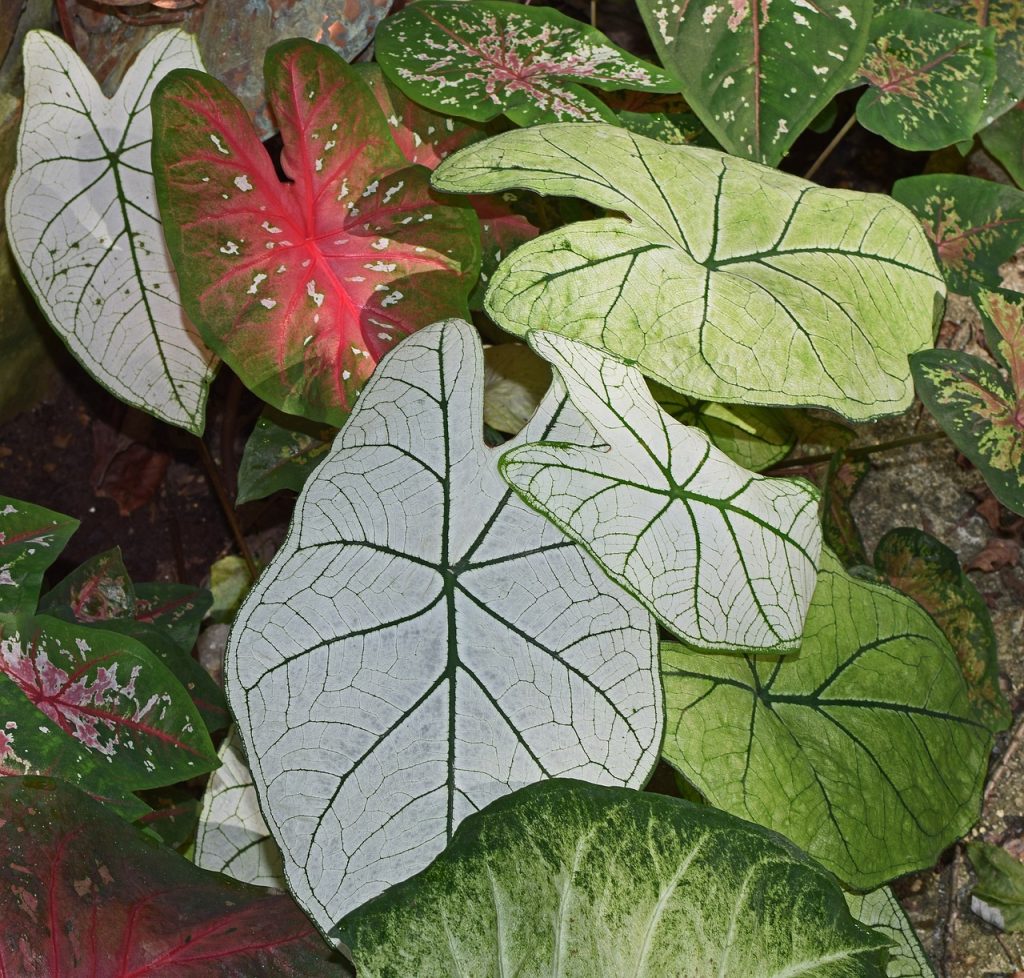
Characteristics and Varieties
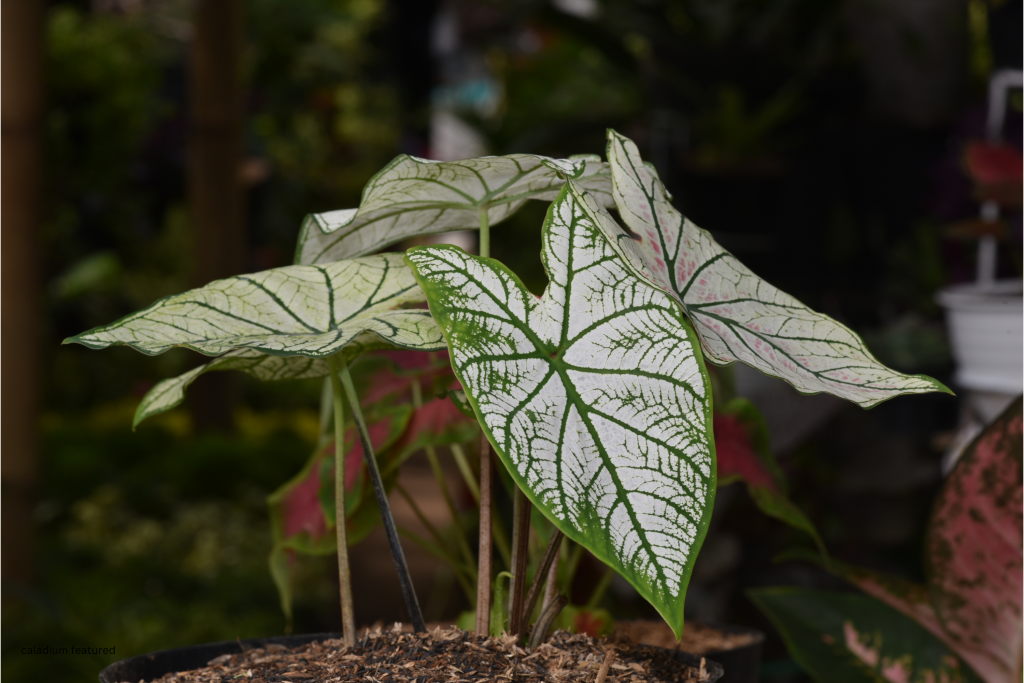
Caladiums belong to the Araceae family and are primarily grown for their spectacular leaves, which come in a plethora of colors including red, pink, white, green, and a mix of these shades. The leaves are heart-shaped, arrowhead-shaped, or lance-shaped, with intricate veining and a variety of patterns.
Some popular varieties include:
Caladium ‘Candidum’: Known for its striking white leaves with green veins.
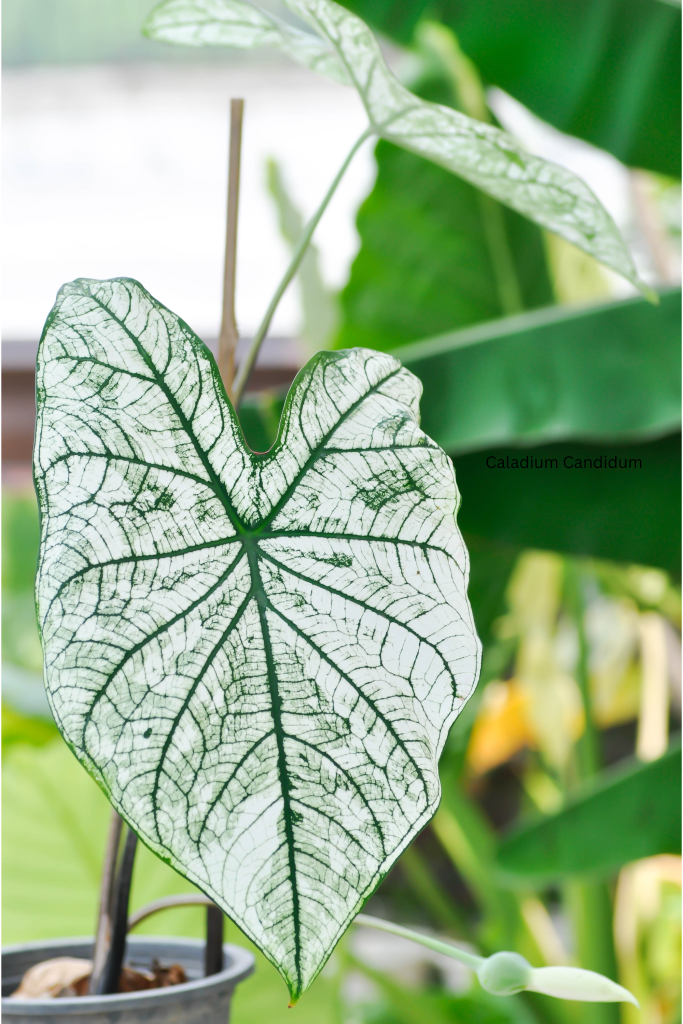
Caladium ‘Red Flash’: Features large red leaves with green edges and prominent red veins.
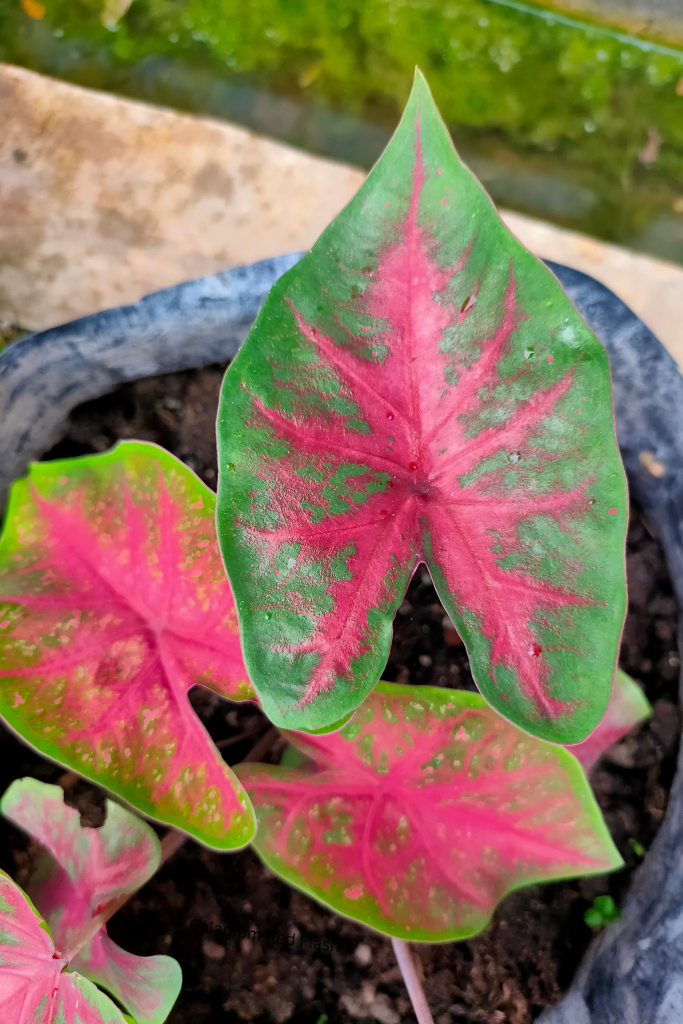
Caladium ‘White Queen’: Exhibits white leaves with bright red veins and green margins.
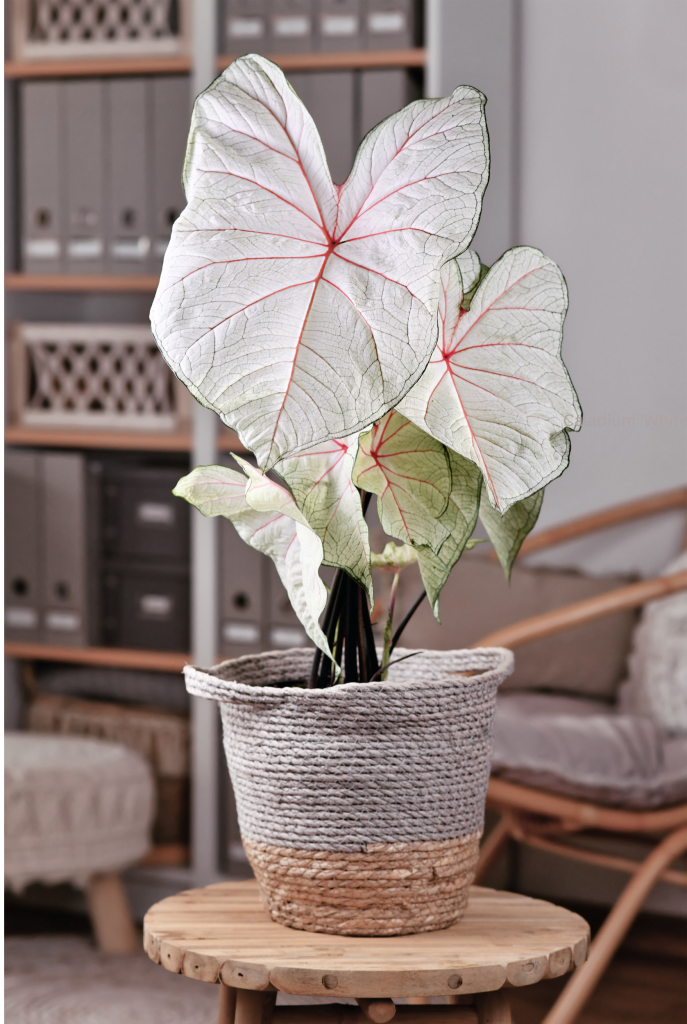
Caladium ‘Fannie Munson’: Has vibrant pink leaves with dark green edges and red veins.
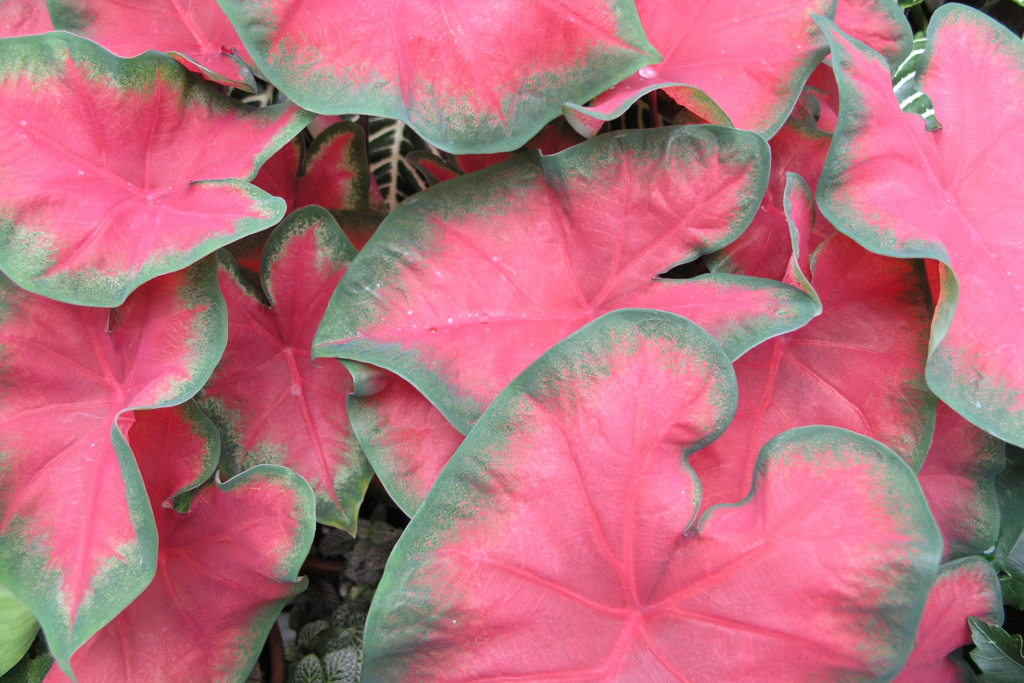
Growing Conditions
To keep Caladiums healthy and vibrant, it’s crucial to provide the right growing conditions. Here’s what you need to know:
Light
Caladiums thrive in bright, indirect light. Too much direct sunlight can scorch their delicate leaves, while too little light can dull their vibrant colors. For outdoor planting, choose a spot with filtered sunlight or partial shade. Indoors, place your Caladium near a window with plenty of indirect light.
Watering
Caladiums prefer consistently moist soil but are prone to root rot if overwatered. Water your Caladium regularly to keep the soil evenly moist but not soggy. Allow the top inch of soil to dry out between waterings to prevent waterlogging. Reduce watering during the plant’s dormant period in the fall and winter.
Soil
A well-draining, rich potting mix is ideal for Caladiums. You can use a standard potting soil amended with organic matter like peat moss or compost to improve moisture retention and drainage.
Temperature and Humidity
Caladiums are tropical plants and thrive in warm, humid conditions. They prefer temperatures between 70°F to 85°F (21°C to 29°C). Avoid exposing them to temperatures below 60°F (15°C). High humidity is beneficial, so consider placing a humidifier nearby or misting the leaves regularly if you’re growing them indoors.
Fertilization
Feed your Caladiums with a balanced, water-soluble fertilizer every 4-6 weeks during the growing season (spring and summer). Use a fertilizer with a higher phosphorus content to promote strong root development and vibrant leaf color. Reduce feeding during the dormant period.
Pruning and Maintenance
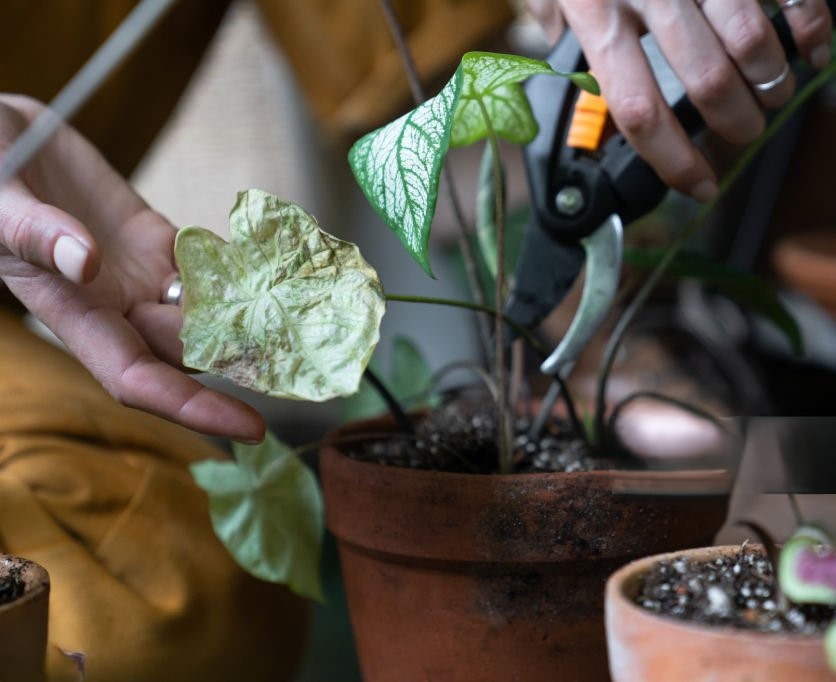
Pruning
Regular pruning helps maintain the shape and size of your Caladiums and encourages new growth. Remove any yellowing or damaged leaves to keep the plant looking its best. Cut back the foliage once it starts to die back in the fall, signaling the beginning of the dormant period.
Cleaning
Dust can accumulate on the leaves, hindering photosynthesis. Gently wipe the leaves with a damp cloth to keep them clean and healthy.
Propagation
Caladiums are typically propagated through tuber division. Here’s how:
- Dig Up the Tubers: Carefully dig up the tubers at the end of the growing season when the foliage has died back.
- Divide the Tubers: Use a sharp knife to divide the tubers, ensuring each piece has at least one growth eye.
- Store the Tubers: Allow the cut tubers to dry for a few days before storing them in a cool, dry place until the next planting season.
- Replant: In the spring, plant the tubers in well-draining soil, burying them about 2 inches deep with the eyes facing up.
Common Problems and Solutions
Pests
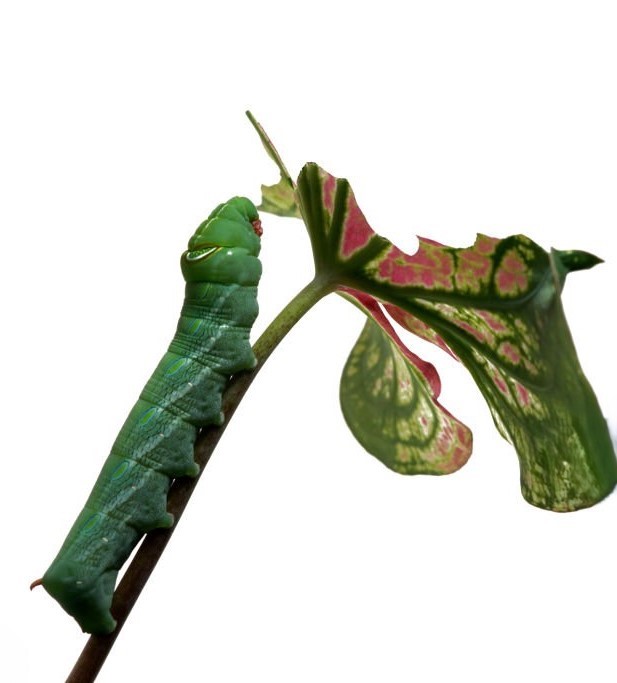
Caladiums can be susceptible to pests such as aphids, spider mites, and mealybugs. Regularly inspect your plants and treat any infestations with insecticidal soap or neem oil.
Fungal Diseases
Overwatering or poor air circulation can lead to fungal diseases like leaf spot and root rot. Ensure good drainage, avoid overhead watering, and provide adequate spacing between plants to promote air circulation.
Yellowing Leaves
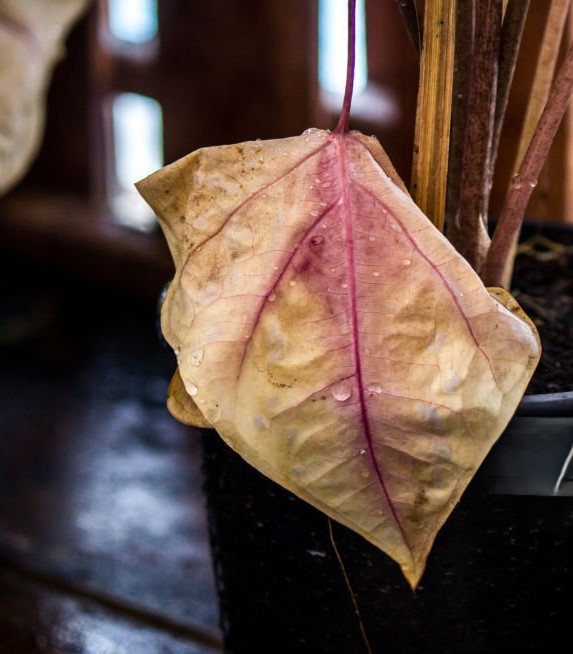
Yellowing leaves can be a sign of overwatering, underwatering, or nutrient deficiency. Check the soil moisture levels and adjust your watering schedule accordingly. Ensure your plant is getting the right amount of nutrients by following a regular fertilization routine.
Seasonal Care
Caladiums have a natural dormancy period in the fall and winter. As the weather cools, the foliage will die back, and the plant will enter dormancy. Reduce watering during this period and stop fertilizing. If you live in a region with cold winters, dig up the tubers and store them indoors to protect them from frost.
Conclusion
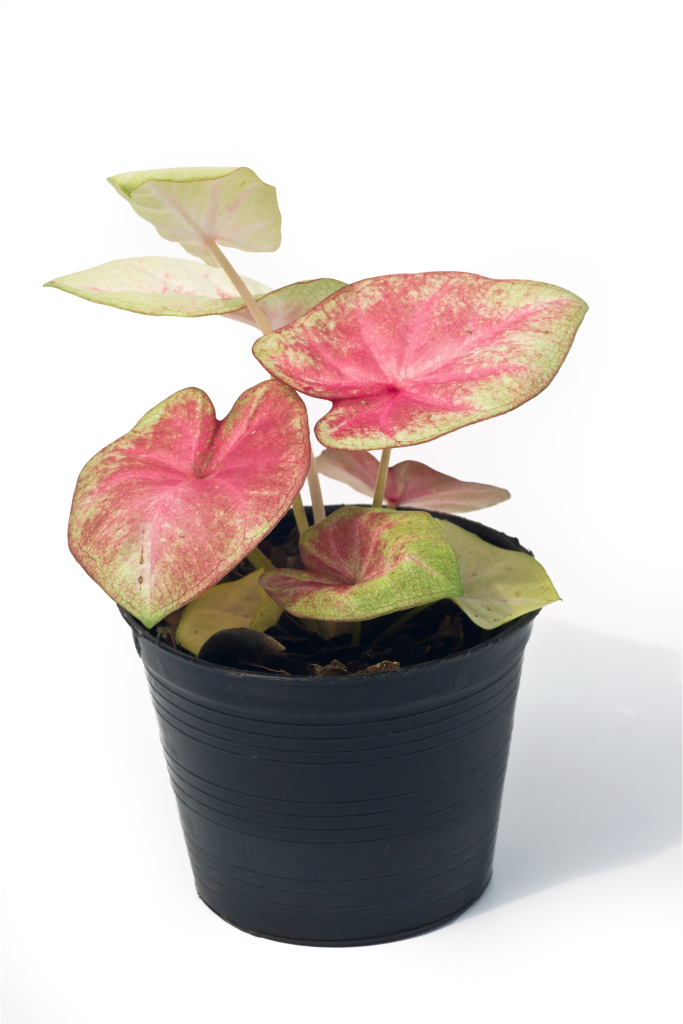
Caladiums are a breathtaking addition to any garden or indoor space, offering a burst of color with their stunning foliage. With proper care and attention to their growing conditions, these tropical beauties can thrive and bring joy for many seasons. Whether you’re a seasoned gardener or a beginner, Caladiums are sure to impress with their vibrant hues and captivating patterns. Embrace the beauty of Caladiums and transform your space into a tropical paradise.



